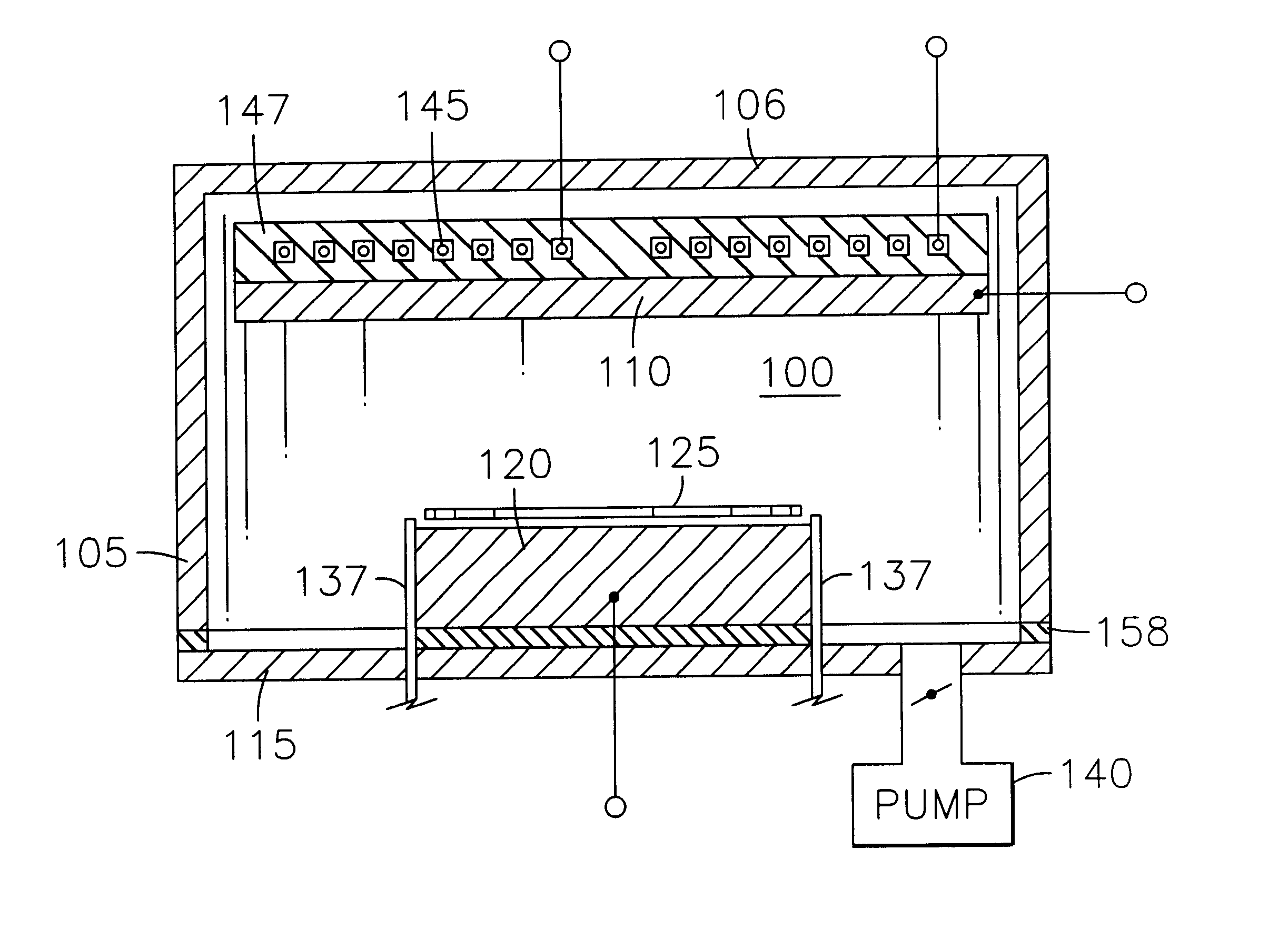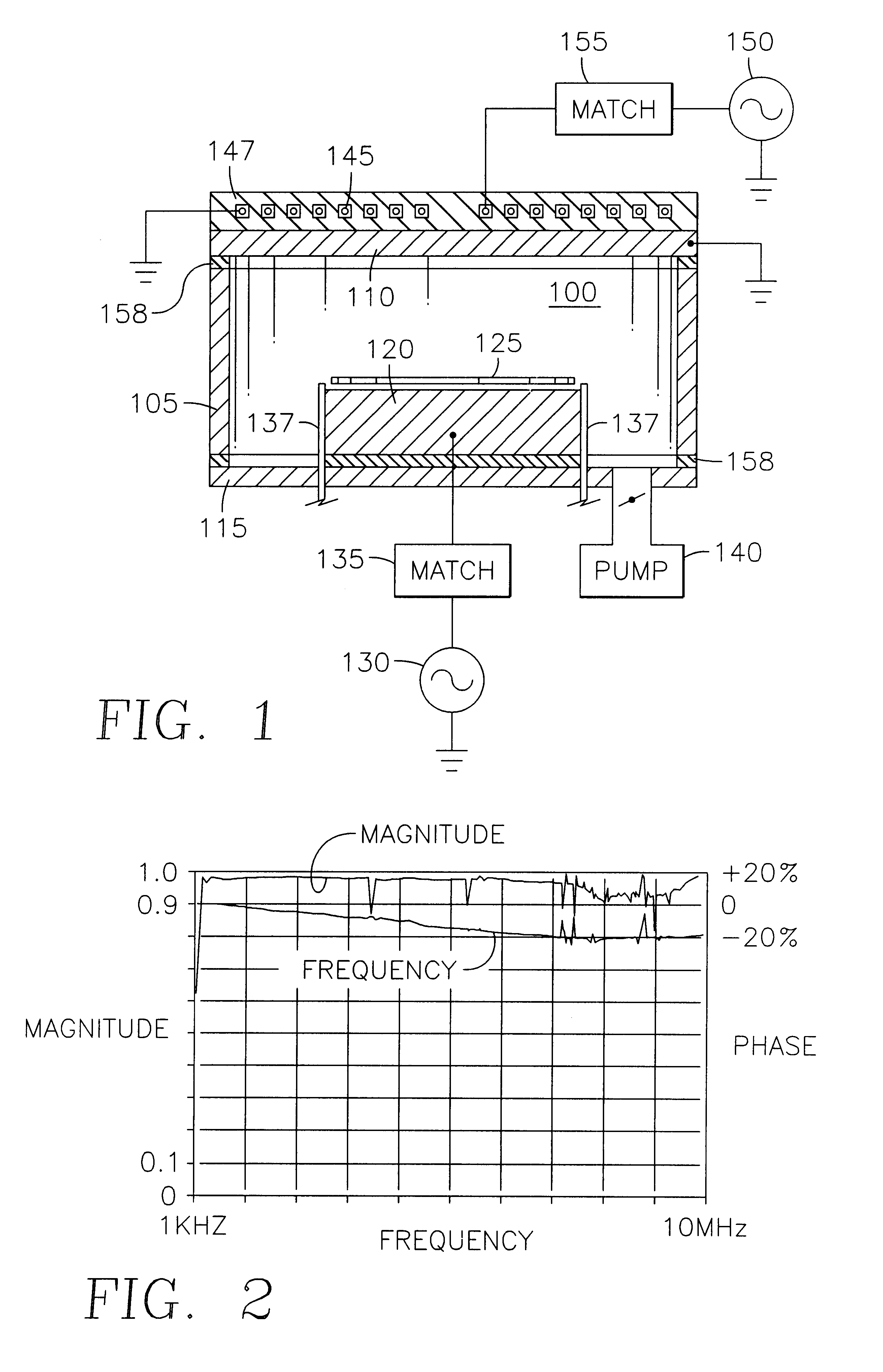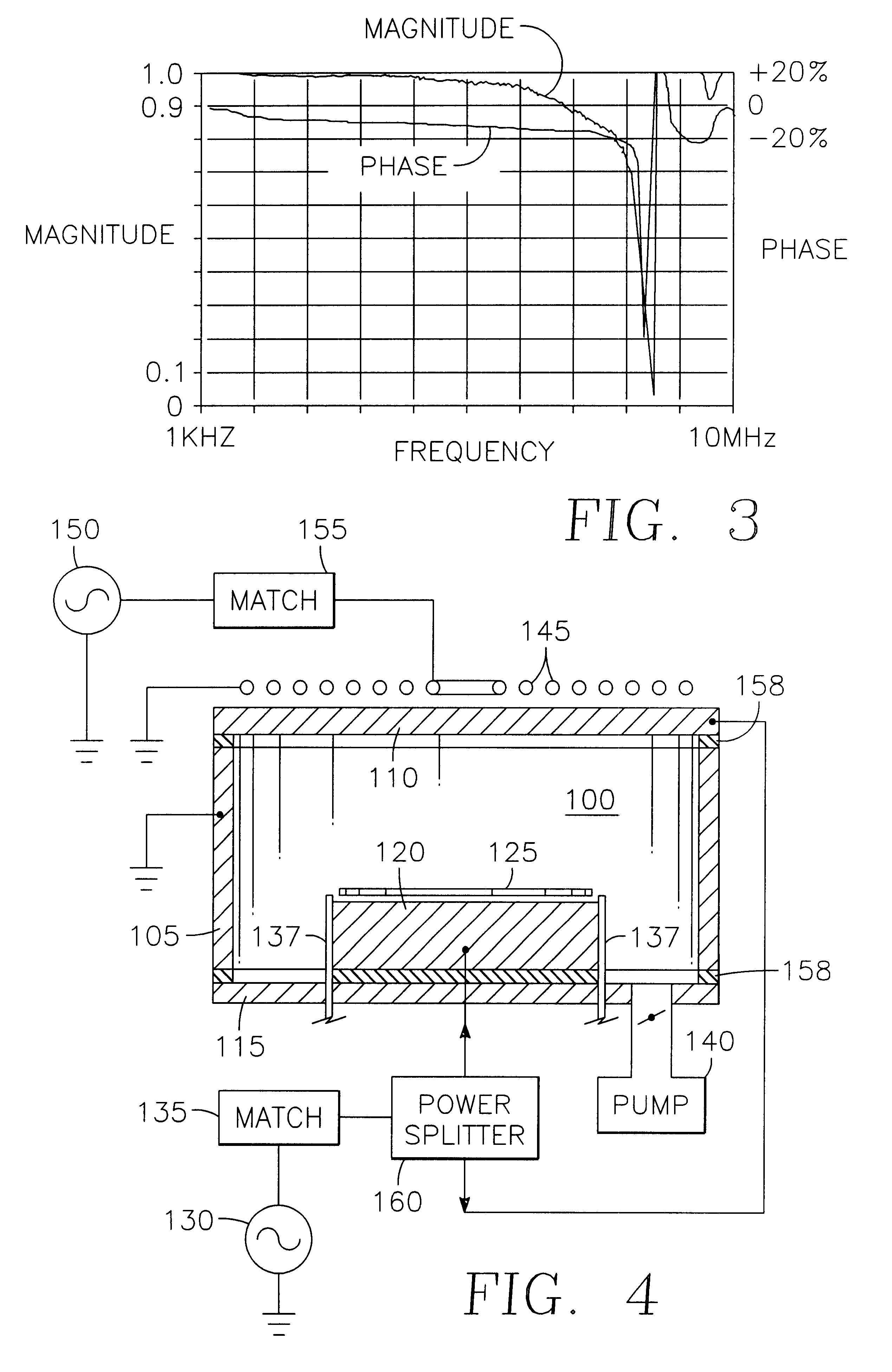Plasma reactor having an inductive antenna coupling power through a parallel plate electrode
- Summary
- Abstract
- Description
- Claims
- Application Information
AI Technical Summary
Benefits of technology
Problems solved by technology
Method used
Image
Examples
first embodiment
FIG. 68A illustrates a cross-sectional view of the magnetic confinement feature referred to previously in connection with the opposing magnet rings 2130, 2135 of FIG. 48A. In FIG. 68A, the magnet rings have poles which are oriented end-to-end with opposing poles facing one another. In FIG. 68B, the opposing magnet poles are oriented side-to-side in opposing directions so that opposite pair of poles are in juxtaposed alignment. In FIG. 68C, the opposing magnet poles are oriented along diagonal acute angles relative to the direction of displacement between the two magnet rings 2030, 2035. FIGS. 68D and 68E correspond to FIGS. 68B and 68C, respectively, except that like magnetic poles are juxtaposed rather than opposing magnetic poles. Other arrangements which provide the requisite diversion of ions from a straight path through the slit valve 1075 or other large opening may be provided in carrying out the invention.
While the embodiments of FIGS. 48A-68C have been described with referen...
working examples
The foregoing concepts were explored in the following working examples using a plasma reactor corresponding in general to the embodiment of FIG. 48A in which the silicon ceiling electrode 1020 had a 10-inch diameter, the cylindrical skirt 1010 had a 10-inch diameter, the gap between the wafer 1065 and the ceiling 1020 was 4 inches, the skirt 1010 was grounded and a RF bias power was applied to the wafer pedestal 1060 and to the ceiling electrode 1020. Also, RF bias power of various selected power levels at 100 kHz was applied to the ceiling 1020. Plasma source RF power of 3250 Watts at 2.0 MHz was applied to the coil 1040 and RF bias power of 1400 Watts at 1.8 MHz was applied to the wafer pedestal 1060. The chamber 1035 was held at a pressure of 50 milliTorr. The light polymer chemistry was provided by combined gas flows into the chamber 1035 of 800 sccm Argon, 100 sccm CHF.sub.3 and 38 sccm CO.sub.2. The wafer was cooled using conventional techniques to avoid overheating. In each o...
PUM
| Property | Measurement | Unit |
|---|---|---|
| Length | aaaaa | aaaaa |
| Temperature | aaaaa | aaaaa |
| Thickness | aaaaa | aaaaa |
Abstract
Description
Claims
Application Information
 Login to View More
Login to View More - R&D
- Intellectual Property
- Life Sciences
- Materials
- Tech Scout
- Unparalleled Data Quality
- Higher Quality Content
- 60% Fewer Hallucinations
Browse by: Latest US Patents, China's latest patents, Technical Efficacy Thesaurus, Application Domain, Technology Topic, Popular Technical Reports.
© 2025 PatSnap. All rights reserved.Legal|Privacy policy|Modern Slavery Act Transparency Statement|Sitemap|About US| Contact US: help@patsnap.com



